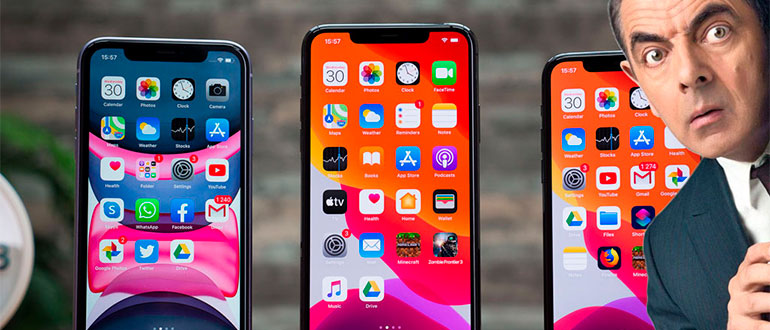Text message hacking refers to the unauthorized access or interception of private SMS communications through various technical or social methods. Describe how this practice typically involves exploiting vulnerabilities in messaging systems, mobile networks, or devices to gain access to messages without the owner’s knowledge. Explain that this may include spying on messages, intercepting them during transmission, or gaining control of the user’s account.
What Is Text Message Hacking?
Text message hacking is the unauthorized access to SMS communications, often done to steal personal information, commit fraud, or conduct surveillance. Hackers exploit vulnerabilities in mobile systems or trick users into revealing sensitive data.
For example, phishing schemes or SS7 protocol flaws have been used in high-profile cybersecurity breaches to intercept messages or bypass two-factor authentication.
Understanding these methods is essential to recognize the risks and take steps to protect your privacy and security.
Legal and Ethical Considerations to Keep in Mind
- Key Legal Frameworks:
- In the United States, the Computer Fraud and Abuse Act (CFAA) makes it illegal to access someone’s device or communications without permission. Violating this law can result in harsh penalties, including prison time.
- In the European Union, the General Data Protection Regulation (GDPR) protects individuals’ personal data, including communications like text messages. Companies and individuals who breach GDPR rules can face significant fines.
These laws exist to ensure that personal information is secure and private, protecting individuals from having their data exploited or stolen.
- Ethical Considerations:
Beyond the legal risks, hacking someone’s messages raises serious ethical concerns. Everyone has a right to privacy, and invading that privacy can cause emotional harm, damage relationships, and lead to trust issues. Imagine how violating someone’s personal space could make them feel exposed or betrayed. - Real-World Examples:
There have been cases where individuals who hacked into others’ communications were caught and faced legal action. For example, incidents of corporate espionage or even private individuals accessing their partners’ messages without consent have led to lawsuits and criminal charges. These cases highlight how risky and damaging unauthorized access can be. - Purpose of This Information:
It’s essential to understand that this knowledge is shared to increase awareness about cybersecurity risks and encourage ethical behavior. The goal is to educate people on protecting themselves, not to promote illegal or unethical actions.
Always remember: respecting others’ privacy and understanding the consequences of hacking are fundamental to maintaining trust and legality in our increasingly digital world
How Do Hackers Target Text Messages Without Physical Access?
Hackers use smart but sneaky techniques to remotely access text messages by taking advantage of flaws in mobile systems and exploiting human errors. Here’s how they do it:
- SS7 Protocol Exploitation:
SS7 (Signaling System 7) is a system used by mobile networks to help phones connect and communicate worldwide. Hackers can exploit vulnerabilities in this system to intercept messages as they travel through the network. Think of it like a thief sneaking into the postal system and reading letters before they arrive. While it’s a complex method, it has been used in high-profile cases, often targeting people with valuable information. - Phishing Schemes:
Phishing is a technique where hackers trick users into giving away sensitive information, like passwords or security codes. For example, you might get a text or email that looks like it’s from your bank or a trusted company, asking you to click a link or verify your account. When you do, the hacker captures your details and uses them to access your messages or accounts. - Social Engineering Tactics:
Social engineering involves manipulating people into handing over private information. Hackers might pose as a tech support agent or even someone you trust, asking for your password or an authentication code. Once they have this information, they can easily access your messages and accounts. - SIM Swapping:
Hackers use SIM swapping to take over your phone number. They call your mobile carrier, pretend to be you, and convince the carrier to transfer your number to a new SIM card. Once they control your phone number, they can intercept texts, including those used for two-factor authentication (2FA), giving them access to your accounts.
These methods often rely on weak security practices, like reusing passwords, falling for fake links, or not using additional protections like two-factor authentication. To prevent these attacks, it’s crucial to stay alert, avoid sharing sensitive information, and use tools like encrypted messaging apps and strong, unique passwords. Awareness is your best defense against these tactics.
Exploring Popular Methods of SMS Hacking
Imagine hackers as sneaky burglars trying to get into someone’s phone to read their text messages. They use clever tricks and mistakes people make to break in. Let’s look at the tools and tricks they use.
- Spyware Apps (Secret Snooping Tools):
Some hackers use special apps like FlexiSpy or mSpy. These apps are like tiny spies that sit inside your phone. But to use them, the hacker needs to put the app on your phone first. Once it’s there, the app can watch and record all your text messages, both the ones you send and the ones you get. - Phishing Tricks (Fake Messages):
Hackers can send you a fake message or link pretending to be someone you trust, like your bank or a friend. If you click the link or enter your password, the hacker can steal your information and use it to get into your messages. It’s like a sneaky trap! - SIM Swapping (Pretending to Be You):
This is when a hacker tricks the phone company into giving them a copy of your SIM card. A SIM card is like your phone’s ID. Once the hacker has your SIM, they can use your phone number to read your messages and take control of your accounts. This trick has been used to steal money and private information from important people. - Different Tricks for Different Phones:
Some of these tricks, like phishing, can work from far away. Others, like spyware, need the hacker to touch your phone first.
Hackers are clever, but their tricks aren’t magic—they often rely on people making mistakes, like clicking strange links or not protecting their phones.
Always be careful to keep your phone safe and your messages private!
How to Hack Text Messages on an Android Phone
Monitoring text messages on an Android device is often simpler compared to other platforms, thanks to the system’s flexibility.
However, gaining access to an Android phone for monitoring always requires physical access to the target device at least once, as Android lacks a built-in remote backup service like iCloud on iOS.
Installing Spy Software on an Android Phone
To monitor text messages on an Android phone, you’ll need to download and install a spy app directly onto the device you want to track. Once installed, these apps can operate in stealth mode, making them invisible to the user.
Popular options, such as mSpy, Hoverwatch, or FlexiSPY, provide an intuitive dashboard or control panel accessible from your computer or smartphone.
This panel allows you to view detailed reports of all monitored activities, including SMS messages.
Advanced Features Available on Android
Compared to iPhones, Android devices allow deeper levels of monitoring due to fewer restrictions on third-party apps. While reading text messages is a key feature, many spy apps offer additional capabilities that go far beyond SMS monitoring.
With a comprehensive app like Hoverwatch or FlexiSPY, you can:
- Call Monitoring: View call logs and details of incoming and outgoing calls. Some apps even record calls for later review.
- GPS Tracking: Track the phone’s real-time location using GPRS or geofencing features.
- Photo and Video Access: Browse through all media files stored on the phone.
- Social Media Monitoring: Monitor conversations and activities on platforms like Snapchat, WhatsApp, Instagram, and more.
- Keylogger Functionality: Record everything typed on the phone, from messages to search queries.
- App Management: View installed apps and block or restrict access to specific applications.
- Web Activity Logs: See their complete browsing history and bookmarked sites.
Some advanced tools, such as FlexiSPY, even allow users to listen to and record live phone calls, making them exceptionally powerful for in-depth monitoring.
Redirecting Text Messages to Another Phone
If your goal is to receive copies of someone’s text messages on your own phone, this is also possible using advanced spy apps. Many apps offer features to forward incoming SMS or notifications directly to your device. Detailed instructions for this functionality can be found in dedicated guides.
Ease of Use and Discretion
One major advantage of these apps is their user-friendly design. Most spy apps are straightforward to install and configure, even for users without technical expertise. Once installed, these apps run discreetly in the background, remaining virtually undetectable by the target phone’s owner.
Key Considerations
- Always choose a trusted spy app to ensure your data remains secure and private.
- Be aware of the legal implications of monitoring someone’s device without their consent. Unauthorized spying can lead to severe penalties.
For more information on these apps and their capabilities, be sure to check out reviews and comparisons on this website. Spy apps are surprisingly powerful, offering a level of access that many find shocking once they explore their full potential.
Can Text Messages Be Hacked Remotely?
Imagine your text messages are like secret letters sent through invisible mail trucks. Sometimes, sneaky people try to read these letters without touching your phone. This is called remote hacking. But doing this is really tricky and doesn’t happen often. Let’s see how it works.
- Breaking the Invisible Mail Truck’s Route (SS7 Protocol Flaws):
Hackers can sometimes sneak into the mobile networks (like the roads the mail trucks use) using something called SS7. This helps them see the messages being sent. But to do this, they need super special tools and knowledge, so not everyone can do it. - Using Spy Bugs on Phones (Spyware like Pegasus):
Some hackers use very smart programs, like Pegasus, to secretly crawl into someone’s phone from far away. Once inside, they can see the text messages and other private stuff. But this is super hard to do and usually happens to important people, like in spy movies. - Why It’s Not Easy:
These methods need expensive tools and smart hackers who know a lot about how phones and networks work. Hackers usually target specific people, not just anyone, because it takes a lot of time and effort. - When Does It Happen?
Remote hacking is rare, but it sometimes happens when governments or big organizations try to watch over criminals or spies. For regular people, it’s much less likely.
So, while it’s possible for hackers to spy on text messages without touching your phone, it’s super complicated and not something you need to worry about as much as other, simpler hacks.
Still, it’s always smart to keep your phone updated and stay safe!
Common Tools Claimed to Hack Texts
The internet is flooded with tools and applications marketed as being able to hack text messages, but many of these claims are exaggerated or outright fraudulent. Understanding the reality behind these tools is crucial to avoid falling into scams or illegal activities.
Popular Spy Apps and Their Functionality
Some well-known apps, such as mSpy, FlexiSpy, and Hoverwatch, are designed as monitoring tools rather than hacking software. These applications advertise themselves as solutions for parental control, employee monitoring, or safeguarding personal devices. Key features of these apps include:
- Monitoring SMS messages, including sent, received, and deleted texts.
- Accessing call logs, GPS locations, and even social media conversations.
- In some cases, advanced capabilities like call recording or keystroke tracking (keylogging).
However, these apps typically require physical access to the target device for installation, making remote hacking almost impossible without prior contact. They also demand that users have administrative permissions, such as root access on Android devices, which adds another layer of complexity.
The Prevalence of Fake and Scam Tools
While legitimate monitoring apps exist, many websites and tools claiming to hack texts instantly are outright scams. These fake services often promise immediate access to someone’s SMS messages with no installation or technical skills required. In reality, they serve as bait to:
- Distribute malware that can compromise your own device or steal sensitive data.
- Demand upfront payments without delivering any functionality.
- Trick users into entering personal information, leading to phishing attacks.
Examples of scams include sites that ask for a “verification fee” before allegedly granting access to text messages or services that redirect users to malicious downloads under the guise of hacking software.
Risks of Using These Tools
Even legitimate spy apps come with significant risks and challenges:
- Legal Risks: Unauthorized monitoring of someone’s communications is illegal in most countries and can result in severe legal penalties, including fines and imprisonment.
- Privacy Breaches: Using poorly secured or untrustworthy apps can expose your own data to cybercriminals. Some of these apps have been criticized for lax security, leaving users’ data vulnerable to breaches.
- Ethical Concerns: Monitoring someone without their knowledge violates trust and ethical boundaries, creating personal and professional risks.
User Reviews and Expert Insights
Many user reviews and expert analyses of spy apps highlight common misconceptions about their functionality. Users often expect these tools to provide instant, remote access without realizing the technical limitations or installation requirements.
For example, reviews of Hoverwatch frequently mention challenges with installation and a lack of support for remote setup, contradicting marketing claims.
Similarly, FlexiSpy’s advanced features, like call recording, demand rooting or jailbreaking the target device, which can void warranties and introduce security risks.
The Risks and Realities of Hacking Software
Hacking software comes with a web of risks that often outweigh any potential benefits, exposing users to serious legal, financial, and cybersecurity dangers. Even when these tools claim to work as advertised, they can carry hidden threats like malware or spyware, designed to steal sensitive information or compromise the user’s own devices. Many such programs are distributed through unverified sources, where malicious intent is often masked by glossy marketing promises.
A significant portion of hacking software advertisements is outright fraudulent, luring unsuspecting users into paying for tools that are either ineffective or harmful. These scams often result in financial loss, personal data breaches, or both. Worse, using these tools can lead to legal trouble, as unauthorized access to someone else’s private communications is illegal in most countries. Courts have handed down harsh penalties, including fines and jail time, to individuals caught attempting to use these programs.
Beyond the legal consequences, hacking software also faces technical limitations. Many of these tools require physical access to the target device, which makes their promises of “remote hacking” impossible without prior contact. Additionally, security updates on modern devices frequently close the vulnerabilities that these tools aim to exploit, rendering them obsolete or ineffective.
Real-world examples further highlight the grim realities of hacking software. Cases of scams involving fake tools have left users not only disappointed but also exposed to phishing schemes and additional cyber threats. Studies consistently show that the success rates of these tools are extremely low, making them a poor choice for anyone considering them.
Ultimately, hacking software is a risky and unreliable venture, filled with more pitfalls than promises. For your own safety—legal, financial, and digital—it’s best to steer clear of these tools entirely. Protecting yourself and respecting others’ privacy are far better options than risking everything for dubious claims.
How to Protect Yourself from SMS Vulnerabilities
To safeguard against SMS hacking, users should adopt a combination of technical and behavioral security measures.
Imagine your text messages are like a treasure chest full of secrets. Hackers are like sneaky pirates trying to steal your treasure. To keep them out, you need strong locks and smart habits!
- Use a Super Strong Lock (Two-Factor Authentication):
Two-factor authentication (2FA) is like adding a second lock to your treasure chest. Even if a hacker tries to guess your password, they’ll need a secret code sent to your phone to get in. This makes it really hard for them to break into your accounts. - Send Secret Messages (Encrypted Apps):
Instead of using regular text messages, try using apps like Signal or WhatsApp. These apps scramble your messages so that only the person you’re texting can read them. It’s like using a secret language that pirates can’t understand! - Don’t Touch Suspicious Links (Avoid Phishing):
If you get a message with a strange link, don’t click it! It could be a trap set by hackers to steal your treasure. Always double-check where a link leads before you tap it. - Keep Your Chest Strong (Update Your Devices):
Regularly update your phone and apps. Updates are like adding new shields to your chest, fixing weak spots so pirates can’t break in. - Set a PIN Code with Your Carrier (Extra Protection):
Call your phone company and ask them to add a PIN code to your account. This PIN stops hackers from pretending to be you and taking control of your phone number. - Use Unique Keys (Strong Passwords):
Make sure your passwords are strong and different for every account. A password like “PuppyL0ves123!” is much harder to guess than “12345.”
By following these steps, you’ll keep your treasure chest safe and hackers far away. Remember, the best defense is staying alert and learning about new tricks pirates might try!
Staying Safe: Tips for Securing Your Messages
Keeping your text messages secure starts with taking proactive steps to shield your personal information from prying eyes. Begin by setting up a strong PIN or password on your device to prevent unauthorized access. Enable SIM lock features through your mobile carrier, adding an extra layer of security to protect against SIM-swapping attacks.
For conversations involving sensitive data, switch to encrypted messaging apps like Signal or Telegram, which ensure that only you and the recipient can read your messages. Regularly check your account activity by reviewing login logs or app notifications to spot unusual activity. This can help you quickly detect if someone has tried to access your account.
Educate yourself about phishing tactics, which hackers often use to trick people into revealing login credentials or security codes. Never share authentication codes sent to your phone, even if the request seems legitimate. To stay informed, enable push notifications for login attempts, so you are immediately alerted to any suspicious access.
Finally, stay updated on emerging security threats by keeping your device’s software current. Updates often fix vulnerabilities that hackers exploit, making them a vital step in staying ahead of potential risks. By combining these practices, you can significantly reduce the chances of unauthorized access to your messages and personal data.












